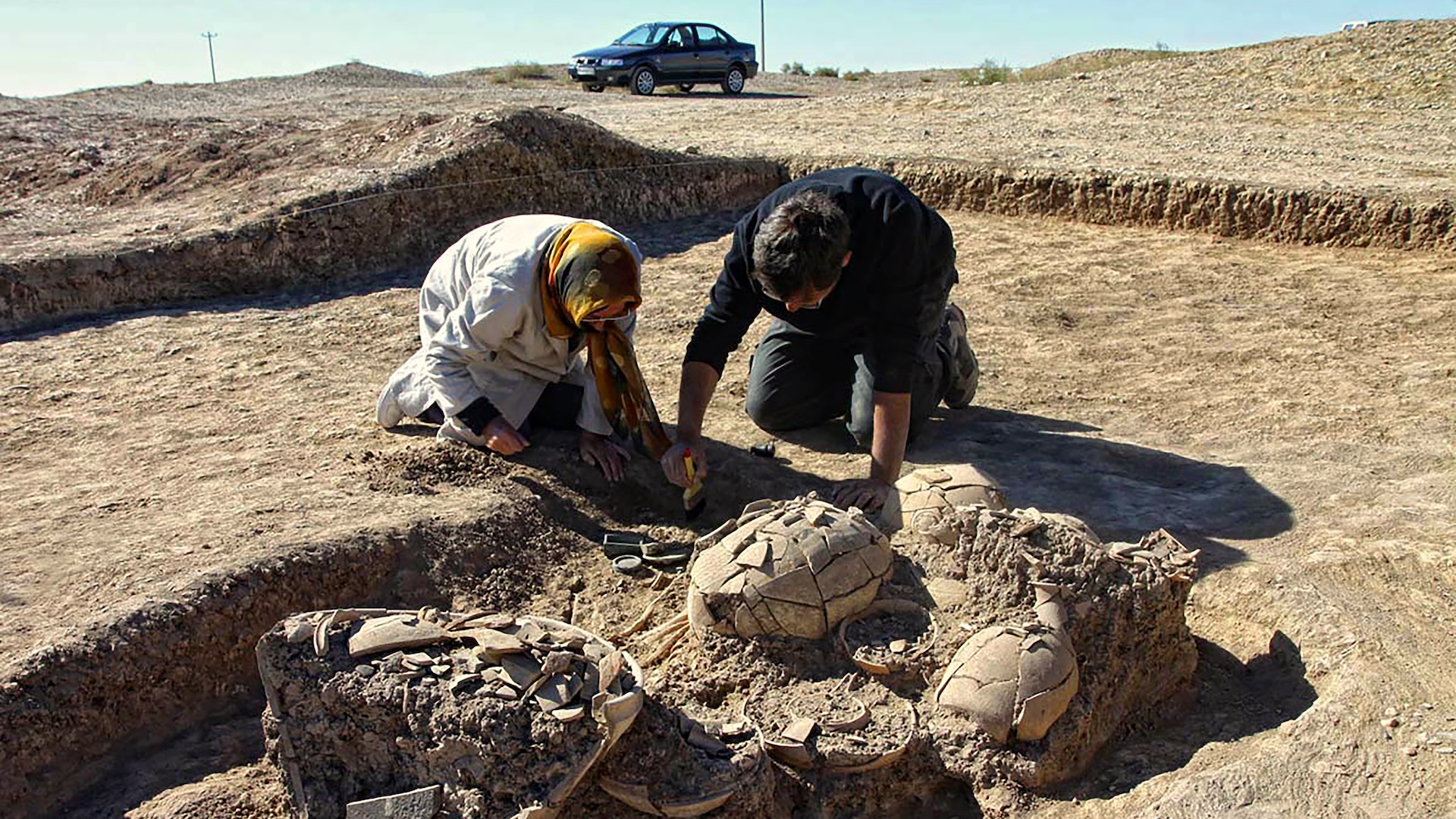Archaeologists in Iran have unearthed the lavish grave of a teenager who lived more than 3,000 years ago, when the region was part of the Greater Khorasan Civilization.
The woman died at about age 18, probably of natural causes. Her rich grave goods, including gold jewelry, indicate that she came from a wealthy family with “inherited status,” according to a study published April 21 in the journal Iran.
The grave, at the Tepe Chalow archaeological site in northeast Iran’s remote North Khorasan province, is one of the richest ever found from the Great Khorasan Civilization (GKC), study lead author Ali Vahdati, an archaeologist with Iran’s cultural heritage ministry, told Live Science in an email.
One of the most remarkable grave goods was a crafted rectangular box made from black stone, rich in “chlorite” minerals, which had been decorated with carvings of snakes and scorpions.
The box was used to store cosmetics or “kohl” — a black powdered mineral often used as eyeliner in ancient times. The snake and scorpion depictions “may have served ritual or protective functions,” the study authors wrote.
An extremely similar box had previously been found in a Bronze Age grave north of Tepe Chalow in the ancient region of Bactria, which now spans parts of Afghanistan, Tajikistan and Uzbekistan; and the Tepe Chalow box also seems to have been made from stone imported from Bactria, Vahdati said.
Related: ‘Cone-headed’ skull from Iran was bashed in 6,200 years ago, but no one knows why
Greater Khorasan
Vahdati first located the Tepe Chalow site (“Chalow Hills” in Persian) in 2006 during an archaeological survey of a nearby river basin, but was unable to return to excavate it until 2011.
A total of 48 graves have now been unearthed there, situated in widely spaced clusters and covered with low mounds that give the site its name.
Most of the graves date from the Bactria-Margiana Archaeological Complex (BMAC), which was part of the Greater Khorasan Civilization — a Bronze Age polity with fortified settlements and monumental architecture that traded with both Mesopotamia and the Indus Valley until it began to decline in the 13th century B.C., Vahdati said.
But a few of the graves date from even earlier, from the late Chalcolithic (“Copper-Stone”) Age in the fourth millennium B.C., when Tepe Chalow was first settled.
The grave of the teenage woman — known as “Grave 12” — was discovered in 2013, but the new study is the first time it has been described in detail, Vahdati said.
The exact age of the grave isn’t yet known, but it’s thought the woman buried there lived in the late third millennium B.C., the study authors said.
She was buried in a crouched position and lying on her right side, with her face turned to the southeast in what seems to have been an ancient tradition at the Tepe Chalow site, the authors wrote in the study.
“Inherited status”
As well as the elaborate cosmetics box, the young woman’s grave contained two gold earrings; a gold finger ring; several pins made from ivory and bronze, including one shaped like a hand; a bronze mirror; several pottery vessels; and a bronze stamp seal depicting human feet.
Vahdati said similar stamp seals have been found at Bronze Age archaeological sites in southern Iran, and that it was one of several seals found in the grave that signified the woman’s active role and social standing in her community.
He added that the ivory pins and beads of lapis lazuli indicated that her community had long-distance trade connections with other ancient regions, including what’s now Afghanistan and the Indus Valley.
The woman buried in Grave 12 was an important person but was too young when she died to have achieved such status herself, Vahdati said. Instead, it’s likely she inherited her social status and wealth from her family, either by birth or through marriage.
“The presence of such wealth in the grave of an adolescent remains unique within the Greater Khorasan Civilization archaeological record,” Vahdati said. “At this stage we can only speak of elite status passed down through lineage, which is consistent with the hierarchical nature of GKC society.”

